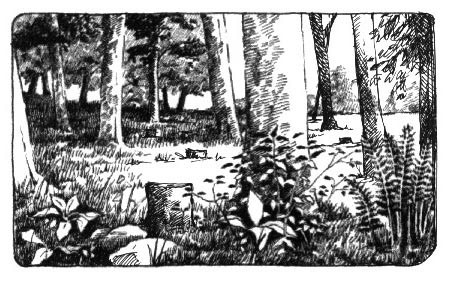
What makes a forest healthy? And can logging improve forest health?
Perhaps you’ve seen ads – from paper companies, loggers, and sometimes foresters – with this message: “If you want your forest to be healthy, call us today!” It’s a very tempting invitation, for above all else, we all want healthy forests. But can logging really improve the health of a forest?
The answer is an emphatic maybe. There are many good reasons to cut trees in your woods, but improving forest health is, at best, questionable.
First, there’s the question of what is a healthy forest. It’s not a green dreamland where nothing dies. On the contrary, it is a place where everything dies. Trees, especially, are killers. New young ones fight each other to the death, shading out their neighbors as they reach for the sun. By the time a tree has reached the canopy, it has killed dozens of its compatriots.
A multitude of organisms has evolved to capture the enormous amount of energy that is stored in dead trees of all sizes. Some of these have figured out how to feed not just on dead, but on dying trees. And, yes, some insects, bacteria, and fungi jump the gun a little and kill stressed trees.
But notice that these agents of death are themselves forms of life. They actively recycle leaves, bark, and wood, keeping a grip on most of the nutrients until another living plant can incorporate them once again. The rate at which trees grow is closely coupled to the rate at which animals and microbes consume dead plants, releasing essential nutrients for tree uptake. In a healthy forest, predators, weather, and the trees’ chemical defenses combine to keep insects and diseases below the levels that seriously harm the plant community. Individual trees die, the plant community lives.
If death doesn’t signify ill health, what does? And can a logging job fix it? Seriously ill forests are missing whole generations of trees or important tree species. Pollution is thought to be the main cause of the terribly sick forests in Europe. And we all know about the losses in this country from introduced diseases and insects – I won’t repeat the long, all too familiar, sorrowful list. Whether it’s the ‘cogs in the wheel’ or ‘rivets in the airplane’ analogy of ecological health, losing key pieces is not good for the community. Logging, however, can’t cure these problems and didn’t cause them.
What logging can do is to greatly improve a forest’s productivity. Even if you yourself have never marked the tress to be removed in a logging operation, you can imagine what it’s like: freeing some of the best trees to grow, removing some of those that are poorly formed, suppressed, or diseased. Working carefully over a long period of time, landowners and foresters can dramatically change a forest’s ultimate value and usefulness to humans, while preserving almost all of its beauty and ecological integrity.
There is no way logging could improve the health of a pristine, untouched forest, especially one magically isolated from today’s polluted air. But most of the forest now growing in the Northeast is far from untouched. Instead, our woods usually consist of trees of the same age – even-aged stands – that became established on abandoned fields and pastures. This situation is unnatural enough that a thoughtful logging operation has a good chance of making it better. Harvests that result in sunny openings, for instance, provide enough sunlight for seedlings and saplings to become established, and a new generation of trees is able to get a start. This adds complexity and creates what foresters and ecologists call structural diversity, a plus for many wildlife species.
I’d love to think that logging can cure a forest’s ills, but it seems to me that logging, for the most part, it’s is exactly like everything else we humans do – whether it’s driving a car, eating a meal, or reading a newspaper – our every move takes some small something from the earth and diverts it to our species. None of us is a hero in Mother Nature’s eyes. The best we can do is to minimize our impact. Cutting trees for our needs close to home, using methods that are in harmony with nature and which sustain the health and diversity of the forest, easily beats most of the alternatives.

